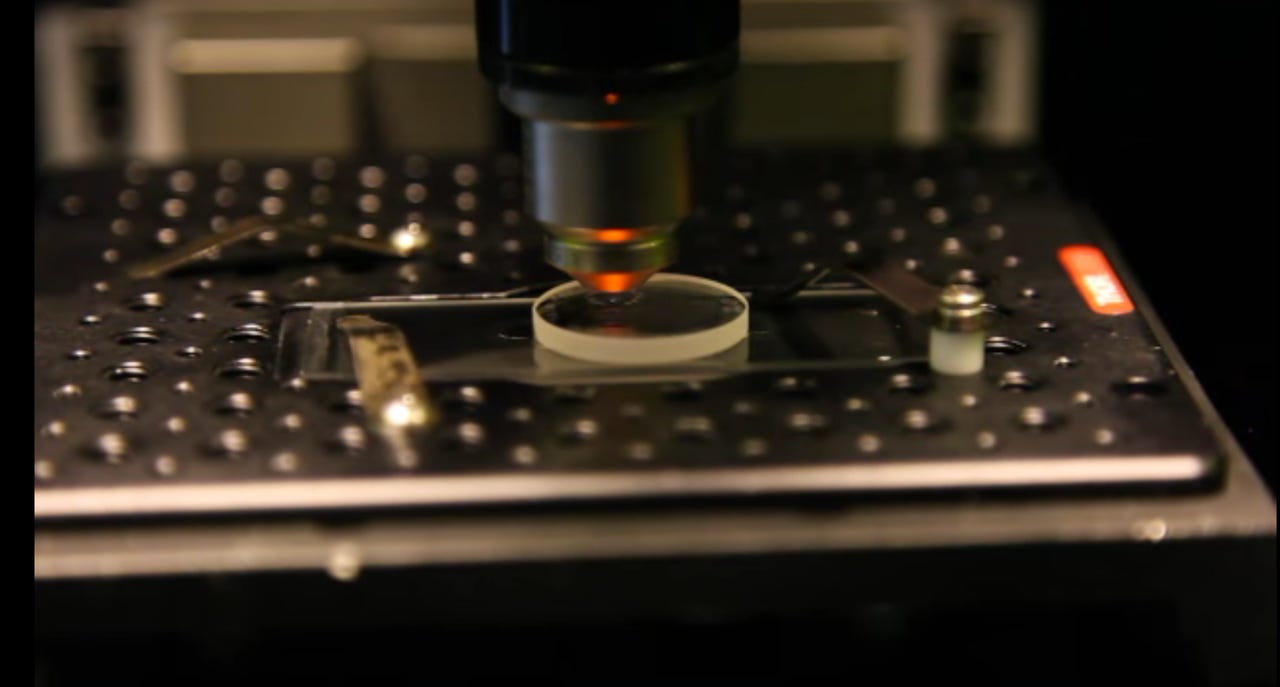Breaking through the storage barrier: Researchers create 5D disc with 360 TB capacity


At a time when we are drowning in data and screaming out for better ways to safely store our information, researchers from the University of Southampton have developed a solution which could revolutionize the storage industry.
On Thursday, scientists at the University of Southampton in the United Kingdom revealed a major breakthrough in storage in the form of a small, five-dimensional disc which not only has a huge capacity but could save our information safely for billions of years.
The team, led by Professor Peter Kazansky from the university's Optoelectronics Research Centre (ORC), say the storage disc includes a data capacity of 360 TB per disc, the ability to withstand temperatures of up to 1,000c and a "virtually unlimited lifetime at room temperature" -- which could preserve our information for as long as almost 14 billion years.
The storage disc is formed of nanostructured glass, and data is both recorded and retrieved in a 5D format using lasers which write to the femtosecond -- a time measurement equal to one quadrillionth of a second. These tiny bursts of intense light are used to write information to the disc in three layers, of which, each layer is made of nanostructured dots separated by only five micrometres.
"As a very stable and safe form of portable memory, the technology could be highly useful for organisations with big archives, such as national archives, museums and libraries, to preserve their information and records," the team says.
The university team first began demonstrating the potential of this technology in 2013, when a 300kb digital copy of a text file was successfully recorded in 5D.
Now, the scientists have successfully copied over some of humanity's most influential documents to the storage devices to demonstrate its capabilities, including the Universal Declaration of Human Rights, Magna Carta and Kings James Bible.
Kazansky commented:
"It is thrilling to think that we have created the technology to preserve documents and information and store it in space for future generations.
This technology can secure the last evidence of our civilisation: all we've learnt will not be forgotten."
The researchers are due to present their findings at the International Society for Optical Engineering Conference in San Francisco this week, where they hope to find commercial partners to further develop the technology.
Featured
Funding research for new, innovative storage solutions may not be as sexy as other projects, but the backbone of the technology industry relies on these kinds of inventions to continue pushing forward -- especially as more and more of us move beyond storing our information on traditional machines and towards areas such as the cloud due to a lack of storage capacity on physical systems.
However, the idea of having such secure, stable and hard-wearing physical storage is not only likely to appeal to tech firms but also historians and archivists who want a better way of preserving our heritage.
Read on: Top picks
- How to increase your Bitcoin mining profit by 30 percent with less effort
- SMS Android malware roots and hijacks your device - unless you are Russian
- Bug bounties: Which companies offer researchers cash?
- Shodan: The IoT search engine privacy messenger
- What happens when you leak stolen bank data to the Dark Web?